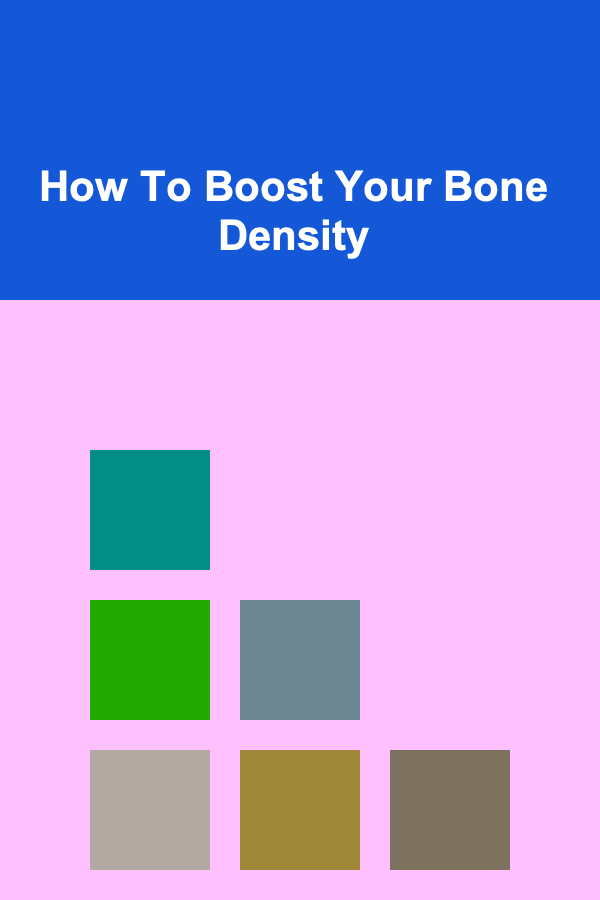
Discovering the Power of Breathwork for Healing
ebook include PDF & Audio bundle (Micro Guide)
$12.99$11.99
Limited Time Offer! Order within the next:

In a world increasingly defined by stress, anxiety, and disconnection, the ancient practice of breathwork is experiencing a resurgence. No longer relegated to the fringes of wellness, breathwork is rapidly gaining recognition as a powerful tool for healing, personal growth, and overall well-being. But what exactly is breathwork, and how can you harness its transformative potential?
What is Breathwork? Unveiling the Ancient Wisdom
At its core, breathwork encompasses a variety of techniques that intentionally manipulate breathing patterns to influence physical, mental, and emotional states. Unlike the unconscious, automatic breathing we engage in throughout the day, breathwork involves consciously controlling the rate, depth, and rhythm of our breath. These controlled breathing patterns can profoundly impact the nervous system, hormonal balance, and even cellular function.
The roots of breathwork are deeply intertwined with ancient traditions. Pranayama, a central component of yoga, has been practiced for millennia to cultivate energy, purify the body, and prepare for meditation. Similarly, meditative traditions like Zen Buddhism utilize breath awareness as a pathway to presence and mindfulness. Indigenous cultures around the world have also long recognized the healing power of breath through practices like shamanic breathing and chanting.
Modern breathwork draws upon these ancient wisdom traditions while also incorporating insights from contemporary fields like psychology, neuroscience, and somatic experiencing. This synthesis of ancient and modern knowledge has led to a diverse range of breathwork techniques, each offering unique benefits and applications.
The Science Behind the Breath: How It Impacts Your Body and Mind
The profound effects of breathwork can be explained through a combination of physiological and neurological mechanisms:
- The Autonomic Nervous System (ANS): Breath is a unique function in that it's both automatic and consciously controllable. This allows us to directly influence the ANS, which regulates vital functions like heart rate, blood pressure, digestion, and immune response. The ANS is divided into two branches: the sympathetic nervous system (SNS), often referred to as the "fight-or-flight" response, and the parasympathetic nervous system (PNS), known as the "rest-and-digest" response. Many breathwork techniques are designed to activate the PNS, promoting relaxation, reducing stress, and enhancing resilience. For example, slowing down the breath and extending the exhale stimulates the vagus nerve, the primary nerve of the PNS, leading to a sense of calm and well-being.
- Oxygenation and Cellular Function: Breathwork can improve oxygenation throughout the body. Deep, conscious breathing increases the supply of oxygen to cells, enhancing energy production, promoting detoxification, and supporting overall cellular health. Proper oxygenation is crucial for optimal organ function and overall vitality. Conversely, shallow or restricted breathing can lead to reduced oxygen levels, contributing to fatigue, sluggishness, and even chronic health problems.
- Hormonal Regulation: Breathwork can influence the release of hormones that play a crucial role in mood, stress response, and overall well-being. For example, certain breathwork techniques can increase levels of endorphins, natural pain relievers and mood elevators. They can also reduce levels of cortisol, the primary stress hormone, mitigating the negative effects of chronic stress on the body and mind. Furthermore, breathwork can influence the release of other hormones like melatonin (sleep regulation) and serotonin (mood regulation).
- Brainwave Activity: Studies have shown that specific breathing patterns can alter brainwave activity. Slow, deep breathing can promote alpha and theta brainwave states, associated with relaxation, creativity, and meditation. These brainwave states are conducive to accessing deeper levels of consciousness and facilitating emotional processing. Conversely, rapid or shallow breathing can stimulate beta brainwave activity, associated with alertness and focus, but also potentially with anxiety and stress.
- Emotional Release and Trauma Processing: Breathwork can create a safe and supportive space for emotional release and trauma processing. By accessing deeper levels of consciousness and disrupting habitual patterns of thought and emotion, breathwork can help individuals release stored emotions, resolve past traumas, and develop greater emotional resilience. The connection between breath and emotion is profound; holding our breath often accompanies suppressed emotions, while conscious breathing can facilitate their healthy expression and integration.
Types of Breathwork: Exploring the Diverse Landscape
The world of breathwork is vast and diverse, encompassing a wide range of techniques, each with its own unique focus and benefits. Here are a few of the most popular and effective breathwork practices:
- Coherent Breathing: This technique involves breathing at a rate of approximately six breaths per minute (five seconds inhale, five seconds exhale). Coherent breathing is known for its ability to balance the nervous system, reduce stress, and improve heart rate variability (HRV), a key indicator of overall health and resilience. It's a relatively simple and accessible technique that can be practiced anywhere, anytime.
- Box Breathing (Square Breathing): This technique involves inhaling for a count of four, holding the breath for a count of four, exhaling for a count of four, and holding the breath again for a count of four. Box breathing is a powerful tool for calming the mind, reducing anxiety, and improving focus. It's often used by military personnel and athletes to manage stress and enhance performance.
- 4-7-8 Breathing: This technique, popularized by Dr. Andrew Weil, involves inhaling quietly through the nose for a count of four, holding the breath for a count of seven, and exhaling completely through the mouth for a count of eight. 4-7-8 breathing is particularly effective for promoting relaxation, reducing anxiety, and improving sleep quality. The longer exhale helps to activate the parasympathetic nervous system.
- Holotropic Breathwork: This technique, developed by psychiatrist Stanislav Grof, involves rapid, deep breathing accompanied by evocative music. Holotropic breathwork aims to induce altered states of consciousness, allowing individuals to access unconscious material, release emotional blockages, and experience profound insights. This technique is typically practiced in a group setting with trained facilitators.
- Rebirthing Breathwork: This technique, developed by Leonard Orr, focuses on connecting the inhale and exhale without any pauses. Rebirthing breathwork aims to release repressed emotions, heal birth trauma, and promote feelings of integration and wholeness. This technique is often facilitated by a trained breathwork practitioner.
- SOMA Breath: This method combines ancient pranayama techniques, breath retention (holding your breath), and rhythmic music to induce profound states of relaxation, energy, and mental clarity. It's designed to optimize oxygen levels, balance the nervous system, and enhance overall well-being.
- Wim Hof Method Breathing: This technique, developed by Wim Hof (also known as "The Iceman"), involves a series of deep, rapid breaths followed by breath retention. The Wim Hof Method combines breathing exercises with cold exposure and commitment to cultivate resilience, boost the immune system, and enhance overall physical and mental performance.
This is just a small sampling of the many breathwork techniques available. The best approach is to experiment with different techniques to find what resonates with you and best suits your individual needs and goals.
Benefits of Breathwork: A Holistic Approach to Well-being
The benefits of breathwork extend far beyond simple relaxation. Regular breathwork practice can lead to significant improvements in various aspects of your physical, mental, and emotional health:
- Stress Reduction and Anxiety Relief: One of the most well-known benefits of breathwork is its ability to reduce stress and alleviate anxiety. By activating the parasympathetic nervous system and promoting relaxation, breathwork can help to calm the mind, ease muscle tension, and lower heart rate and blood pressure. It can be a particularly helpful tool for managing acute stress and preventing chronic stress from taking a toll on your health.
- Improved Sleep Quality: Breathwork can be a powerful tool for improving sleep quality. By calming the nervous system and reducing anxiety, breathwork can help you fall asleep more easily and stay asleep longer. Techniques like 4-7-8 breathing and coherent breathing are particularly effective for promoting relaxation and preparing the body for sleep.
- Enhanced Focus and Concentration: Breathwork can improve focus and concentration by calming the mind and reducing mental chatter. By practicing techniques like box breathing, you can train your mind to stay present and attentive, improving your ability to focus on tasks and activities.
- Emotional Regulation and Trauma Healing: Breathwork can be a valuable tool for emotional regulation and trauma healing. By accessing deeper levels of consciousness and releasing repressed emotions, breathwork can help you process past traumas, develop greater emotional resilience, and cultivate a more positive and balanced emotional state.
- Increased Energy and Vitality: By improving oxygenation and promoting detoxification, breathwork can increase energy levels and enhance overall vitality. Deep, conscious breathing can revitalize your body and mind, leaving you feeling more energized and alert.
- Pain Management: Breathwork can be used as a complementary therapy for pain management. By reducing stress, promoting relaxation, and releasing endorphins, breathwork can help to alleviate pain and improve overall well-being. It can be particularly helpful for managing chronic pain conditions like fibromyalgia and arthritis.
- Improved Cardiovascular Health: Regular breathwork practice can improve cardiovascular health by lowering blood pressure, reducing heart rate, and improving heart rate variability. These benefits can help to reduce the risk of heart disease and other cardiovascular problems.
- Enhanced Immune Function: Breathwork can boost the immune system by reducing stress and promoting relaxation. Chronic stress can suppress the immune system, making you more vulnerable to illness. By reducing stress and improving overall well-being, breathwork can help to strengthen your immune system and protect you from disease.
- Spiritual Growth and Self-Discovery: Breathwork can be a powerful tool for spiritual growth and self-discovery. By accessing deeper levels of consciousness and connecting with your inner self, breathwork can help you gain insights into your life purpose, develop a greater sense of meaning, and cultivate a deeper connection with the world around you.
Getting Started with Breathwork: A Practical Guide
Embarking on your breathwork journey can be a rewarding and transformative experience. Here are some practical tips to help you get started:
- Start Small and Be Patient: Begin with simple techniques and gradually increase the intensity and duration of your practice. Don't expect to experience profound results immediately. Consistency is key, so aim for regular practice, even if it's just for a few minutes each day.
- Find a Quiet and Comfortable Space: Choose a quiet and comfortable space where you can relax and focus on your breath without distractions. You can practice breathwork sitting, lying down, or even standing.
- Focus on Your Breath: Pay attention to the sensation of your breath as it enters and leaves your body. Notice the rise and fall of your chest or abdomen. Try to deepen and lengthen your breath without forcing it.
- Listen to Your Body: Pay attention to any sensations or feelings that arise during your practice. If you experience any discomfort or dizziness, stop and adjust your breathing or take a break.
- Explore Different Techniques: Experiment with different breathwork techniques to find what resonates with you and best suits your individual needs and goals. There are many resources available online and in books to guide you through different practices.
- Consider Working with a Trained Practitioner: If you are interested in exploring more advanced breathwork techniques or if you have any underlying health conditions, consider working with a trained breathwork practitioner. A qualified practitioner can provide guidance, support, and personalized instruction.
- Be Mindful of Contraindications: While generally safe, breathwork may not be suitable for everyone. Certain techniques can be contraindicated for individuals with specific conditions, such as severe asthma, uncontrolled hypertension, epilepsy, a history of psychosis, or pregnancy. Consult with your doctor or a qualified healthcare professional before starting breathwork, especially if you have any underlying health concerns.
Resources for Further Exploration
The journey into breathwork is a lifelong exploration. Here are some resources to help you deepen your understanding and practice:
- Books:
- The Healing Power of the Breath by Richard P. Brown and Patricia L. Gerbarg
- Breath: The New Science of a Lost Art by James Nestor
- Conscious Breathing: How Shamanic Breathwork Can Transform Your Life by Nicki Scully
- Holotropic Breathwork: A New Approach to Self-Exploration and Therapy by Stanislav Grof and Christina Grof
- Websites and Online Courses:
- YouTube channels dedicated to breathwork (search terms: "breathwork tutorial," "pranayama," "box breathing")
- Online breathwork courses offered by certified instructors
- Websites and blogs dedicated to breathwork and related topics (e.g., MindBodyGreen, Yoga Journal)
- Breathwork Practitioners:
- Search online directories for certified breathwork practitioners in your area
- Ask for referrals from friends, family, or other healthcare professionals
Conclusion: Embrace the Power Within
Breathwork is a powerful and accessible tool for healing, personal growth, and overall well-being. By consciously controlling your breath, you can influence your nervous system, hormonal balance, and even cellular function, unlocking your body's innate capacity for healing and resilience. Whether you are seeking to reduce stress, improve sleep, enhance focus, or explore deeper levels of consciousness, breathwork offers a simple yet profound path to transformation. Embrace the power of your breath and begin your journey towards a healthier, happier, and more fulfilling life.

How to Build a Checklist for Practicing Effective Decision-Making
Read More
How to Build a Passive Income Stream Through Investments
Read More
How to Handle Difficult Tenants with Grace
Read More
How to Incorporate Children's Artwork into Holiday Decor
Read More
The Best Budget-Friendly Alternatives for Personal Care Products That Actually Work
Read More
How To Boost Your Bone Density
Read MoreOther Products

How to Build a Checklist for Practicing Effective Decision-Making
Read More
How to Build a Passive Income Stream Through Investments
Read More
How to Handle Difficult Tenants with Grace
Read More
How to Incorporate Children's Artwork into Holiday Decor
Read More
The Best Budget-Friendly Alternatives for Personal Care Products That Actually Work
Read More